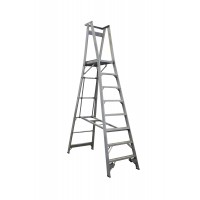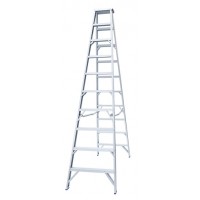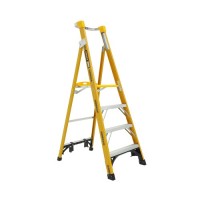There are so many ladder brands available in the market. Each brand has some advantages or weaknesses compared to the others. However, if you look briefly, these ladder manufacturers claim that their ladders are the strongest, the safest and manufactured to the Australian Standards.
The question is if they are all the strongest and safest, how do we know what to look and consider when deciding which ladder to buy? After all, they are all strong and safe but sold at different prices. The only differences that we can see are only the appearances, sizes and shapes of the parts and colours.
Australian Standards
The first thing to look is whether the ladder actually passed the tests required by the Australian Standards. Be careful with vague wording saying that the ladder has been ‘tested’ to the Australian Standards. It basically tells users that the ladder has been tested without further information if it actually passes the tests.
Materials, Design and Construction
The second thing to look is the quality of the materials used, the design and the construction.
It is important to know if the ladder is manufactured using high quality materials because it will determine the lifetime of your ladder especially when you use it every day. A ladder with low quality materials may look strong, safe and meet the Australian Standards when it is still in the shop but within 6 months the parts start to loose and the ladder will collapse eventually. The best way to find this information is from your fellow tradies and friends who have used the ladders you want to buy.
Some ladders are designed poorly to keep the cost down. It can be reflected on the appearances such as sharp edges and thin aluminium. It does not only affect the durability of the ladder but it could also cause injury to the user.
The other important aspect is the construction of the ladder such as the joints between the steps or rungs and the stiles. There are many different step/rung joining method that can be used. Each method will determine the strength and durability of the joint and also the production cost. For example, a ladder that uses pop rivet construction to joint the steps to the stiles will have a very short lifetime and a lot cheaper compared to a ladder that uses solid rivet construction, which can last for 15 or 20 years. The ladder that uses solid rivet construction may cost $50 - $100 more but you only buy it once in the next 15 or 20 years while with the cheaper ladder you will need to buy another one in the next 2 or 3 years.
Stability
The next step is to see how stable the ladder is when you are climbing it and while you are on the ladder. This is a very important factor to consider for your safety.
The next thing to consider is price. You must be careful with ladders sold at a very low price because you are actually compromising your safety. It does not mean that you have to buy the most expensive ladder to be safe. There are some ladders with affordable prices that are actually really good.
Weight
The last thing to consider is the weight of the ladder. If you often need to carry around your ladder to do your job, it is best to choose a lightweight ladder. It will enable you to finish your job quicker and also reduce the chance of getting muscle strain. Heavier ladder does not always mean safer and better in quality. Some manufacturers are able to manufacture lightweight ladders without compromising its quality and safety as they have better and more advanced technology in ladder manufacturing than others.
Please read our ladder selection guide to get some handy hints to choose the most suitable ladder for your job application.



